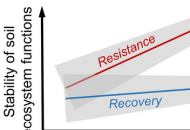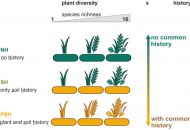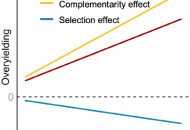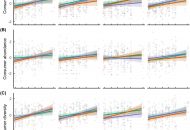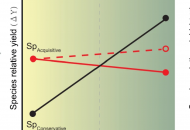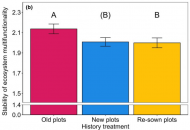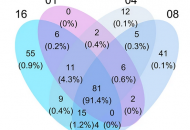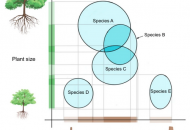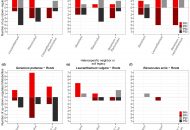Publication
-
New publication from Eisenhauer et al. in Research Ideas and Outcomes: Plant diversity effects on soil multistability
Soil is the basis for life on Earth as we know it. Healthy and stable soil is a prerequisite for well-functioning terrestrial ecosystems and has, thus, been proposed to play…
-
New publication from Albracht et al. in Biology and Fertility of Soils: Common soil history is more important than plant history for arbuscular mycorrhizal community assembly in an experimental grassland diversity gradient
The relationship between biodiversity and ecosystem functioning strengthens with ecosystem age. However, the interplay between the plant diversity – ecosystem functioning relationship and Glomeromycotinian arbuscular mycorrhizal fungi (AMF) community assembly…
-
New publication from He et al. in Communications Biology: Cumulative nitrogen enrichment alters the drivers of grassland overyielding
Effects of plant diversity on grassland productivity, or overyielding, are found to be robust to nutrient enrichment. However, the impact of cumulative nitrogen (N) addition (total N added over time)…
-
New publication from Bröcher et al. in Basic and Applied Ecology: The positive plant diversity/consumer relationship is independent of grassland age
Plant diversity is an important driver of many ecosystem processes within and among trophic levels. There is growing evidence that the strength of plant diversity effects depends on the biotic…
-
New publication from Zheng et al. in Nature Communications: Effects of plant diversity on productivity strengthen over time due to trait-dependent shifts in species overyielding
Plant diversity effects on community productivity often increase over time. Whether the strengthening of diversity effects is caused by temporal shifts in species-level overyielding (i.e., higher species-level productivity in diverse…
-
New publication from Dietrich et al. in Global Change Biology: Plant diversity and community age stabilize ecosystem multifunctionality
It is well known that biodiversity positively affects ecosystem functioning, leading to enhanced ecosystem stability. However, this knowledge is mainly based on analyses using single ecosystem functions, while studies focusing…
-
New publication from de Souza et al. in Environmental Microbiome: The seeds of Plantago lanceolata comprise a stable core microbiome along a plant richness gradient
Seed endophytic bacteria are beneficial to plants. They improve seedling growth by enhancing plant nutrient uptake, modulating stress-related phytohormone production, and targeting pests and pathogens with antibiotics. Seed endophyte composition…
-
Deciphering nature’s climate shield: Plant diversity stabilises soil temperature
Based on a media release of Leipzig University A new study has revealed a natural solution to mitigate the effects of climate change, such as extreme weather events. Researchers from…
-
New publication from Eisenhauer et al. in npj Biodiversity: Reply: Functional similarity is more appropriate than functional redundancy
Replying to Felícia M. Fischer and Francesco de Bello npj Biodiversity https://doi.org/10.1038/s44185-023-00029-z (2023) In our Comment, we outlined that the term functional redundancy (1) may have been overused from an…
-
New publication from Ristok et al. in Ecology and Evolution: Plant diversity and soil legacy independently affect the plant metabolome and induced responses following herbivory
Plant and soil biodiversity can have significant effects on herbivore resistance mediated by plant metabolites. Here, we disentangled the independent effects of plant diversity and soil legacy on constitutive and…
Posts navigation
We’ve made the move from Twitter to Bluesky. Follow us there for all the latest updates.

